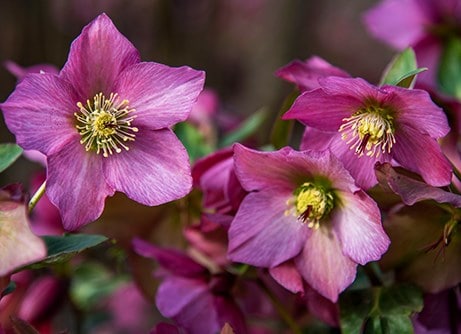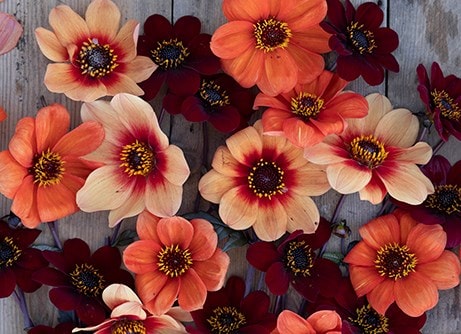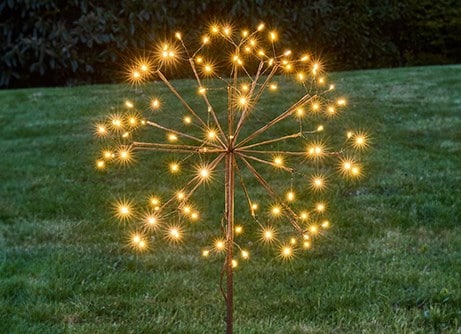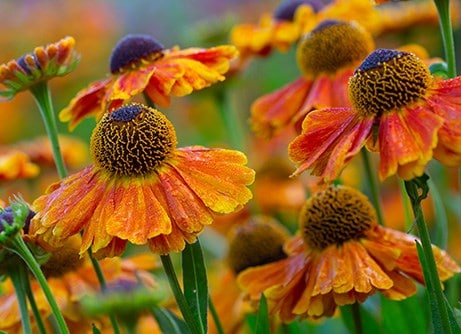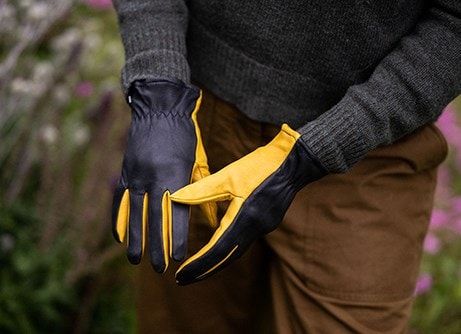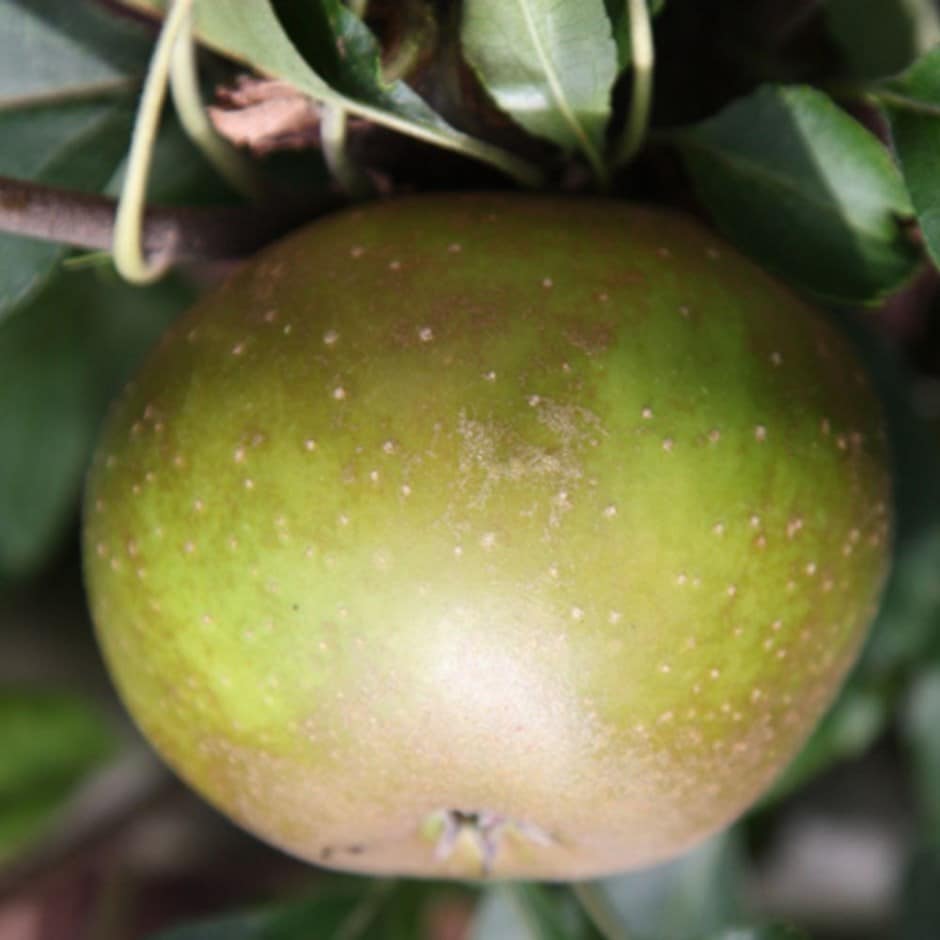
Suitable for growing in a pot, you will be able to squeeze one of these apple trees into even the smallest gardens - and then you will be able to enjoy harvesting your very-own, home-grown fruits! Noted for its crisp, creamy yellow flesh that has a subtle, nutty flavour, apple 'Egremont Russet' has stood the test of time, and remained popular since it was discovered in Sussex in the 18th century.
The apples will be ready to harvest in late September or October.
If you choose the top worked option, the crown of this small tree has been grafted onto the upright stem of the rootstock at a height of 70cm, which will limit the eventual height. Perfect for a small garden or growing in a large pot with a loam-based (John Innes) compost.
Pollination information: This apple belongs to pollination group 2, and is partially self fertile, but a pollinating partner will help to produce a reliable, bumper crop of apples. 'Egremont Russet' can be cross-pollinated with other apples in this group, or those from pollination groups 1 or 3.
The apples will be ready to harvest in late September or October.
If you choose the top worked option, the crown of this small tree has been grafted onto the upright stem of the rootstock at a height of 70cm, which will limit the eventual height. Perfect for a small garden or growing in a large pot with a loam-based (John Innes) compost.
Pollination information: This apple belongs to pollination group 2, and is partially self fertile, but a pollinating partner will help to produce a reliable, bumper crop of apples. 'Egremont Russet' can be cross-pollinated with other apples in this group, or those from pollination groups 1 or 3.
How to care for apple Egremont Russet:
When planting your apple tree, prepare a hole up to three times the diameter of its root system. Fork over the base of the pit in readiness, incorporating plenty of organic matter into the backfill and planting hole. Place the plant in the planting hole and carefully refill, firming the soil around the roots to eliminate air pockets. Insert stake at this point if required.
Avoiding frozen and waterlogged soil, trees should be planted out as they arrive. If you've ordered a bare root tree, soak the roots in a bucket of water for half an hour prior to planting - or if this is not possible, they can be heeled in temporarily, covering their roots with soil, or potted up.
Keep the base of the tree weed free, fertilise at the beginning of each year water regularly during hot, dry spells.
The main prune should be done in the winter as long as it isn't frosty or freezing. Take out the 3D’s (dead, dying and diseased wood) and create an open shape. Then reduce the leaders back by a third. Aim to create an airy structure without any crisscrossing branches.
In August summer prune. Shorten any side shoots (or laterals) which are longer than 20cm back to three leaves. This will allow the sun to ripen the fruit and encourage more fruit buds. Make sure that the growth you’re cutting away feels firm to the touch.
Please note: The decorative pot shown is not included and is for presentation purposes only. Our trees are supplied in standard nursery pots, and the images showing young trees in pots are intended to give an idea of our larger plant’s height and form on arrival. We do offer a wide range of decorative pots separately if you’d like to recreate the look, although for long-term success, trees are best planted in the ground.
Please refer to our rootstock guide above for further assistance when selecting a fruit tree that would be suitable for growing in a large (at least 50cm or 20in Ø) pot, filled with a loam-based (John Innes) compost.
Avoiding frozen and waterlogged soil, trees should be planted out as they arrive. If you've ordered a bare root tree, soak the roots in a bucket of water for half an hour prior to planting - or if this is not possible, they can be heeled in temporarily, covering their roots with soil, or potted up.
Keep the base of the tree weed free, fertilise at the beginning of each year water regularly during hot, dry spells.
The main prune should be done in the winter as long as it isn't frosty or freezing. Take out the 3D’s (dead, dying and diseased wood) and create an open shape. Then reduce the leaders back by a third. Aim to create an airy structure without any crisscrossing branches.
In August summer prune. Shorten any side shoots (or laterals) which are longer than 20cm back to three leaves. This will allow the sun to ripen the fruit and encourage more fruit buds. Make sure that the growth you’re cutting away feels firm to the touch.
Please note: The decorative pot shown is not included and is for presentation purposes only. Our trees are supplied in standard nursery pots, and the images showing young trees in pots are intended to give an idea of our larger plant’s height and form on arrival. We do offer a wide range of decorative pots separately if you’d like to recreate the look, although for long-term success, trees are best planted in the ground.
Please refer to our rootstock guide above for further assistance when selecting a fruit tree that would be suitable for growing in a large (at least 50cm or 20in Ø) pot, filled with a loam-based (John Innes) compost.
Flowering period:
- Jan
- Feb
- Mar
- Apr
- May
- Jun
- Jul
- Aug
- Sep
- Oct
- Nov
- Dec
Position:
Full sun
Rate of growth:
Average
Soil:
Moderately fertile, moist, but well-drained soil, or general-purpose loam-based potting compost
Hardiness:
Fully hardy
-
This plant is deciduous so it will lose all its leaves in autumn, then fresh new foliage appears again each spring.
Product options

9 litre pot | M26 root stock | 1.2m
£49.99
In stock
(shipped within 2-3 working days)
(shipped within 2-3 working days)

12 litre pot | M27 |top worked at 70cm
£119.99
In stock
(shipped within 2-3 working days)
(shipped within 2-3 working days)

bare root | M26 root stock | 1.2m tall
£34.79
In stock
(shipped within 2-3 working days)
(shipped within 2-3 working days)

bare root | MM106 root stock | 1.2m tall
£39.99
available to order from spring
Unavailable
1
Delivery options (pick your preferred option at checkout)
Standard Delivery£5.99
Named Day Delivery£10.99

